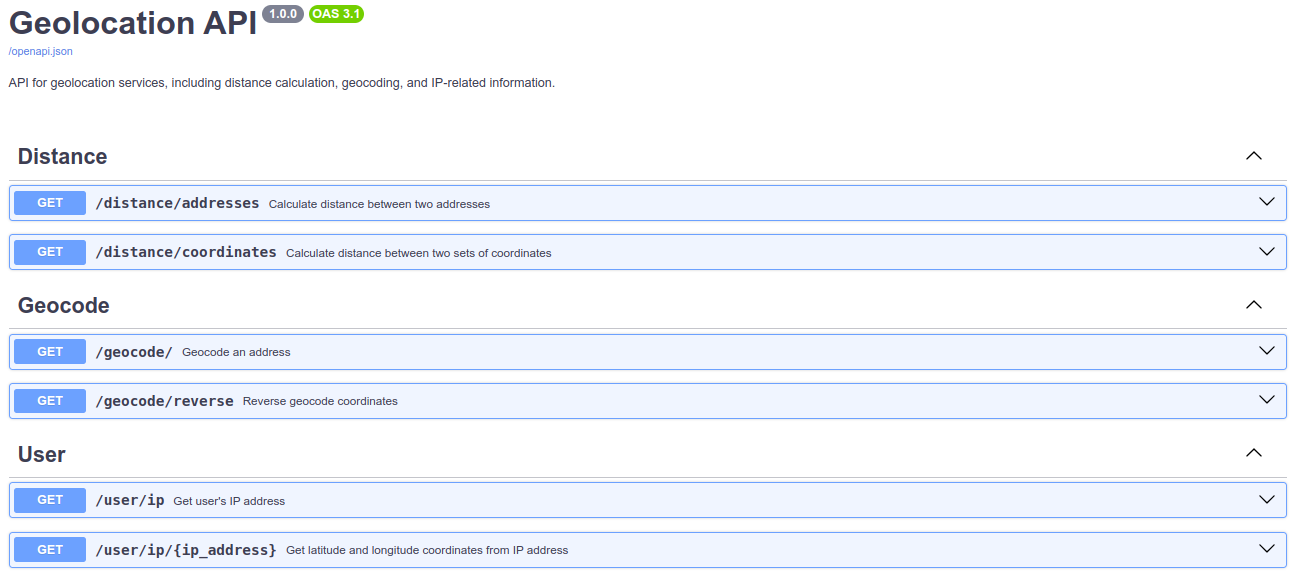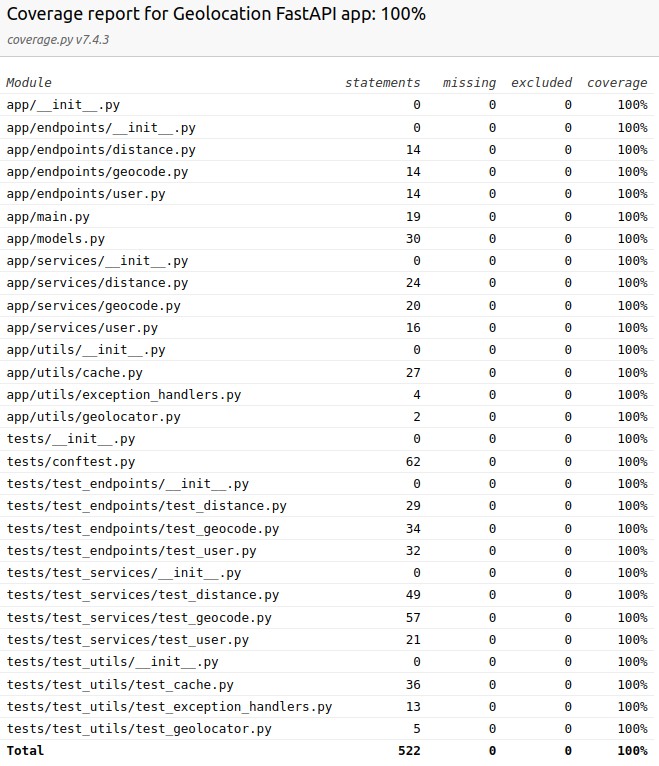This API retrieves coordinates (latitude and longitude) based on the address passed in the command line.
Application written using ChatGPT 3.5.
- Request: here
Create a fastapi application with an endpoint that displays geolocation. The address should be obtained from the passed parameter 'q'. Use some Python library to determine the geolocation by address. Run this API on Hypercorn with three workers. Use nginx as a proxy server. And put all of this into Docker. For convenience, use Docker Compose. And show the file hierarchy so I understand where to put what.
- Changes:
- Updated dependencies due to outdated specifications.
- Python version upgraded from 3.9 to 3.12.
- Added dependency on Hypercorn, as it was missing from requirements.txt.
- Removed Uvicorn startup command from Dockerfile; instead, specified the command to run using Hypercorn in docker-compose.yml.
- Minor edits in main.py to adhere to PEP8 standards (added 1 blank line before the
get_geolocationfunction).
- Request: here
I have a FastAPI application. I would like to add an endpoint that will display the real IP address of the user. It's possible to obtain the IP from httpbin.
- Request: here
I have a FastAPI application. I would like to add another endpoint for reverse geocoding (coordinates to address) using the same Python package, geopy. Also, don't forget to catch possible errors.
- Request: here
How can I find the latitude and longitude for an IP address for free using Python?
- Request: here
Let's create a new endpoint in my FastAPI application. It will be a search for the distance between objects. I'm already using the geopy library. Maybe we can do something with it?
- Request: here
In our FastAPI application, we already have an endpoint to find the distance in kilometers between objects. We use the geopy library. I suggest adding an endpoint to find the distance as well, but now the request arguments will be addresses instead of latitude and longitude.
- Request: here
It was a full-fledged conversation where we updated the code, caught bugs, fixed them, and ultimately even managed to get something working.
- Request: here
- Extra information: This was one of the longest conversations with ChatGPT. During the conversation, it replaced the already well-generated code with another. It was forgetting about the code that had already been written, coming up with non-existent calls to library methods, and a couple of other things.
You have written a FastAPI application with several endpoints for obtaining geolocation. Act as the lead Python developer: I need to optimize and refactor your application and its deployment, even if it's necessary to completely change the structure or code (for example, splitting a file into modules), so proceed without hesitation. You will explore all possible edge cases that may lead to errors (you need to think of some data validation for the data that will come from users). During the process, you should focus on code cleanliness, relevance, and correct usage of various third-party libraries. Provide detailed documentation for FastAPI endpoints so that it is displayed in Swagger, and don't forget to include descriptions not only for the endpoints themselves but also descriptions of the status codes that may be displayed to the user (referring to the "responses" parameter in the initialization of endpoints, for example, responses={429: {"model": YourModelName}}). Please avoid code duplication, remember DRY and KISS principles. Output the final result in well-structured files and their refactored code. Describe everything in detail, don't skip anything! Here's the project structure:
project_root/
|-- app/
| |-- main.py
|-- Dockerfile
|-- docker-compose.yml
|-- nginx/
| |-- nginx.conf
|-- requirements.txt
And here's the contents of the files: ...I copied the contents of all files...
- Request: here
It was another full conversation where we were trying to find suitable conditions for tests, encountering errors again, and fixing them. While writing the tests, we even found bugs in the API and corrected them. As a result, we achieved 100% code coverage with our tests.

